| Columns Retired Columns & Blogs |
Bel Canto Design Aida D/A processor Measurements
Sidebar 3: Measurements
The Bel Canto Aida had one of the lowest output levels I've measured from any processor: just 1.4V when decoding a full-scale, 1kHz sinewave. Unusually, the output level was identical from the unbalanced and balanced outputs. Although the Aida had a low output impedance of 90 ohms, the 1.4V maximum output level may not be enough to drive some power-amplifier/loudspeaker combinations to adequate listening levels without an active preamplifier. The Aida doesn't invert absolute polarity; a positive-going impulse on a CD produces a positive-going output signal. The unit had no trouble locking to 32kHz and 48kHz, and DC levels were a low 1.1mV (left channel) and 4.3mV (right channel).
Fig.1 shows the Aida's frequency response and de-emphasis error. Although the frequency response is predictably flat, the de-emphasis circuit has a significant error that produces a 1.6dB response dip centered on 4.5kHz. This de-emphasis error will produce a loss of treble, reduced immediacy, and lack of presence when playing pre-emphasized CDs (of which there are very few). The channel separation measured nearly 110dB at 1kHz, decreasing to better than 90dB at the highest audio frequency.
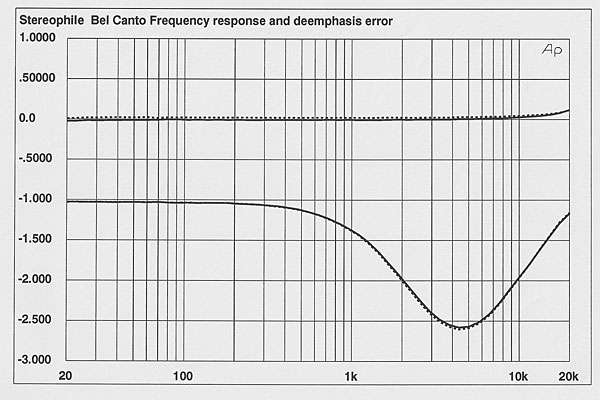
Fig.1 Bel Canto Aida, frequency response (top) and de-emphasis error (bottom) (right channel dashed, 0.5dB/vertical div.).
Looking at a spectral analysis of the Aida's output when decoding a –90dB, 1kHz sinewave (fig.2), we can see that the processor has good linearity and an absence of power-supply noise intruding on the audio signal. The noise level below 1kHz is, however, a few dB higher than that measured in most processors.
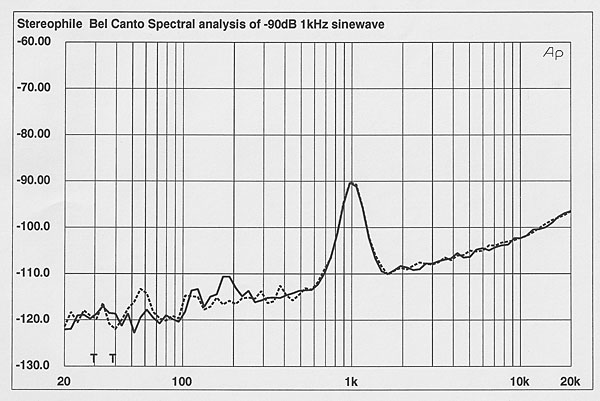
Fig.2 Bel Canto Aida, spectrum of dithered 1kHz tone at –90.31dBFS, with noise and spuriae (1/3-octave analysis, right channel dashed).
The Aida had excellent low-level linearity (fig.3), with minimal deviation to below –100dB. This kind of linearity performance is routine for the Crystal CS4328 1-bit type DAC used in the Aida. Fig.4 shows the Aida's reproduction of a –90dB, 1kHz undithered sinewave. The waveshape and noise level are typical of the CS4328 DAC; more high-frequency noise overlays the signal than is common with multi-bit DACs.
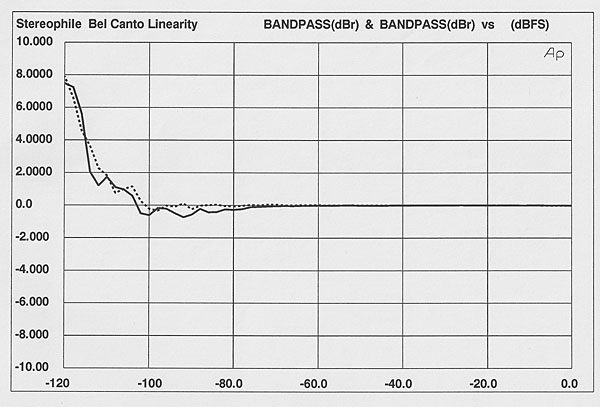
Fig.3 Bel Canto Aida, departure from linearity (right channel dashed, 2dB/vertical div.).
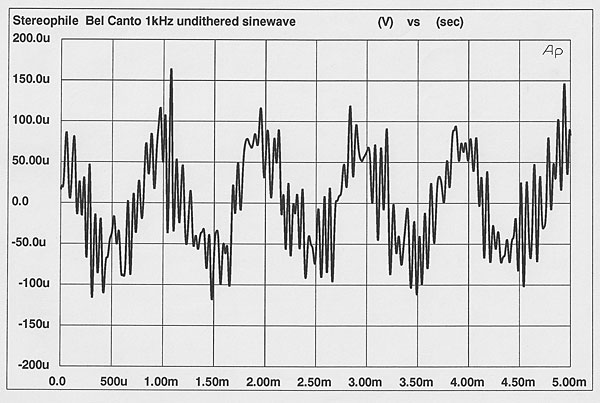
Fig.4 Bel Canto Aida, waveform of undithered 1kHz sinewave at –90.31dBFS.
The Aida's noise-modulation performance (fig.5) was excellent, with very tight trace groupings. This indicates that the Aida's noise floor doesn't shift or change its spectral balance as a function of input level. Fig.6 is the Aida's intermodulation spectrum; although few IMD components exist, the 1kHz difference component (20kHz minus 19kHz) is moderately high in level.
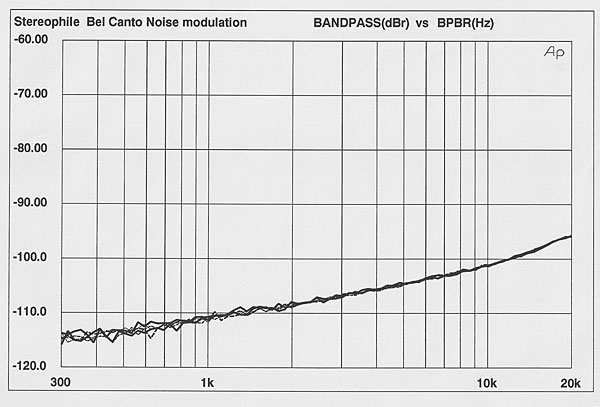
Fig.5 Bel Canto Aida, noise modulation, –60 to –100dBFS (10dB/vertical div.).
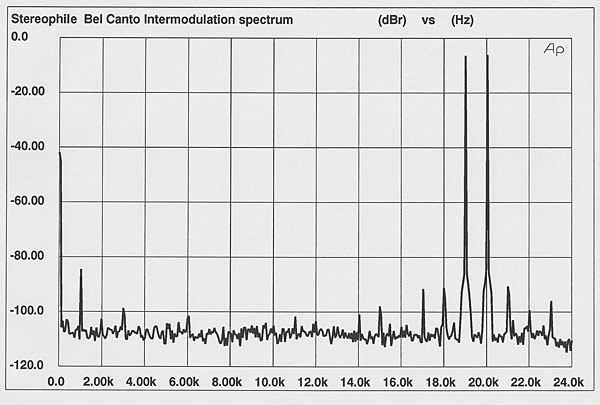
Fig.6 Bel Canto Aida, HF intermodulation spectrum, DC–22kHz, 19+20kHz at 0dBFS (linear frequency scale, 20dB/vertical div.).
The Aida had good jitter performance, with a low overall RMS jitter level and good rejection of signal-correlated jitter from the S/PDIF interface. (All jitter measurements were made on the CS4328 DAC's 256x clock pin.) Fig.7 shows the worst-case jitter performance, made by driving the Aida with data representing a full-scale 1kHz sinewave. We can see a spike of energy at 1kHz, but no other periodic jitter components. The RMS jitter level, measured over a 400Hz–22kHz bandwidth, was 60 picoseconds (equal to 300ps on an 8x clock). With all other input signals, the jitter spectrum was perfectly clean and low in RMS level. Fig.8 is the spectrum made when driving the processor with a –90dB, 1kHz sinewave. We can see no periodic components, and the RMS jitter level dropped to 30ps. The Aida's jitter spectrum looked nearly identical to that in fig.8 with a variety of input signals, suggesting that the clock is relatively immune to interface jitter.
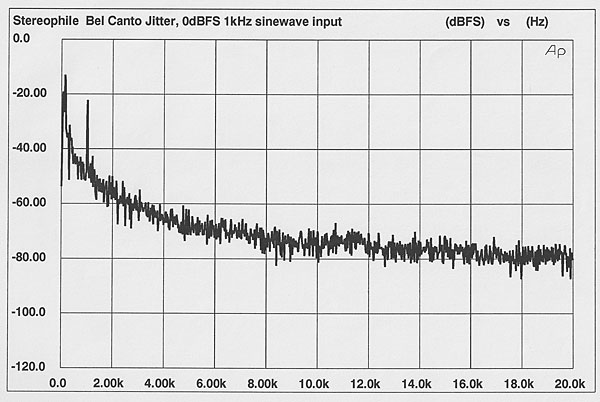
Fig.7 Bel Canto Aida, word-clock jitter spectrum, DC–20kHz, when processing 1kHz sinewave at 0dBFS (linear frequency scale, 20dB/vertical div., 0dB=1ns).
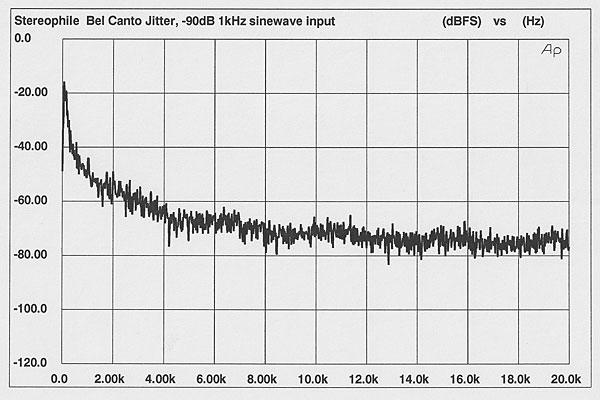
Fig.8 Bel Canto Aida, word-clock jitter spectrum, DC–20kHz, when processing 1kHz sinewave at –90dBFS (linear frequency scale, 20dB/vertical div., 0dB=1ns).
Overall, the Aida measured well on the bench, particularly its jitter performance. The large de-emphasis error shouldn't affect most listeners (only about 2% of CDs are pre-emphasized), but does mar the Aida's otherwise good technical performance.—Robert Harley
- Log in or register to post comments




































